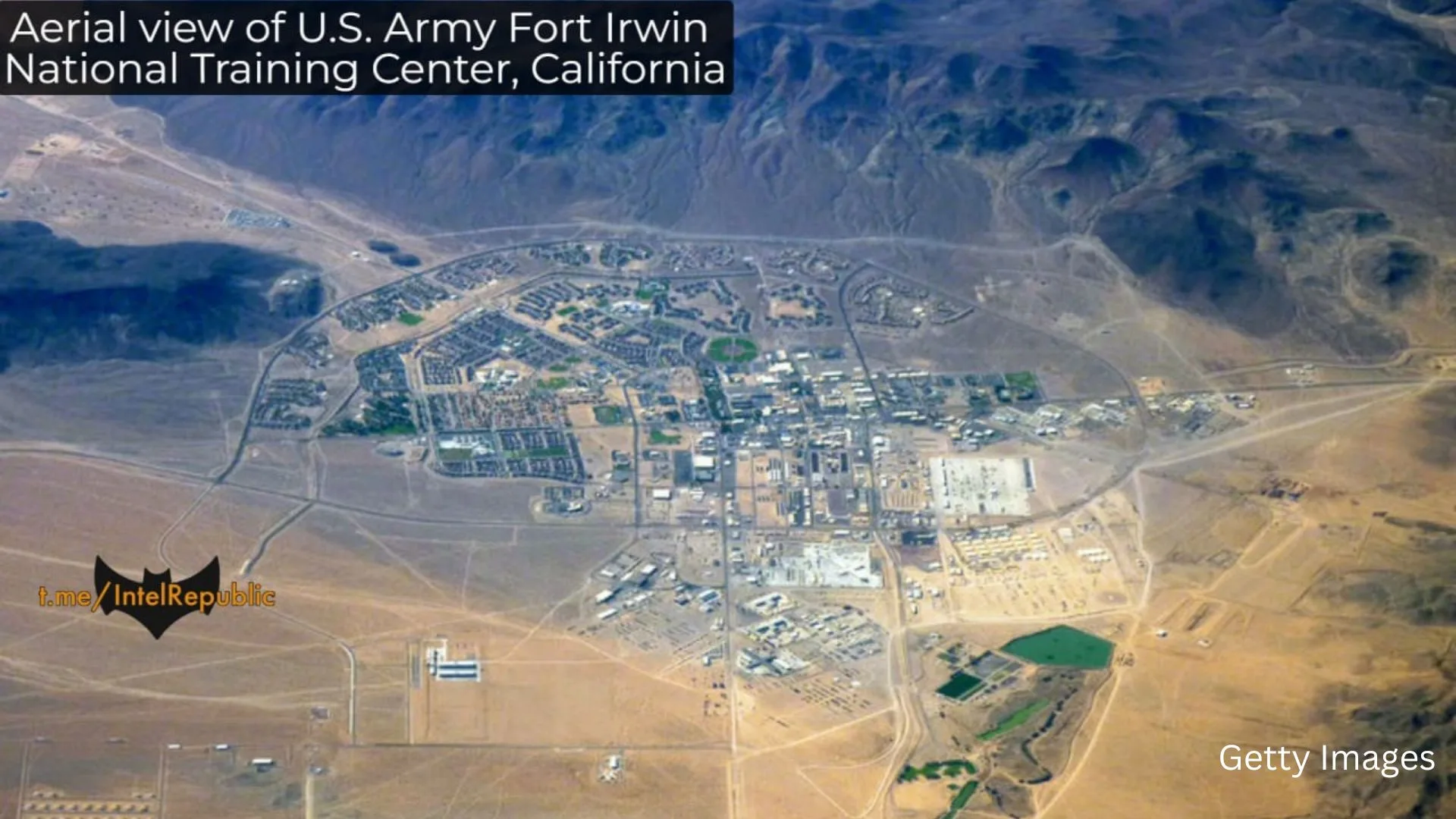A U.S. soldier allegedly violated military regulations by leaving a highly sensitive map of California’s Fort Irwin, a major U.S. Army training station, inside a Bradley Fighting Vehicle dispatched to Ukraine, which was later seized by Russian forces. The error, initially disclosed by a journalist in a concerning video, has unveiled both the configuration of the essential training facility and confidential details regarding U.S. military operations. The disclosure has raised apprehensions regarding its impact on national security and U.S. military strategy, alongside the increasing intricacies of the ongoing conflict in Ukraine.
The map was revealed following the reported capture of the Bradley Fighting Vehicle by Russian forces, a heavily armored battle vehicle sent by the U.S. to Ukrainian forces as part of Western military assistance in their defense against Russian aggression. During the standard examination of the seized car, Russian forces uncovered a map outlining significant features of Fort Irwin, an extensive 1,000-square-mile military training facility situated in the Mojave Desert in Southern California.
A journalist disclosed the incident by releasing footage of the map in a video, prompting significant alarm among U.S. military and intelligence sectors. The map purportedly includes comprehensive details regarding Fort Irwin’s configuration, encompassing training zones, infrastructure, and critical areas utilized by the U.S. military for war games and drills. Fort Irwin functions as a leading training facility for the U.S. Army, where extensive, realistic combat simulations are executed to equip soldiers for diverse future warfare situations. This site is essential for developing the capabilities of U.S. forces in urban warfare, mechanized combat, and the use of advanced technologies in military operations.

The base’s significance to U.S. military readiness renders the inadvertent revelation of a sensitive map to other entities, especially Russia, a grave security breach. The specifics of Fort Irwin’s infrastructure may furnish opponents with critical intelligence, enabling them to analyze U.S. training methodologies, configurations, and possible weaknesses.
The gravity of this error is amplified by the fact that Fort Irwin serves as the location for U.S. personnel to engage in sophisticated training exercises that simulate authentic combat scenarios. The base is crucial for training soldiers for operations in varied and demanding conditions, ranging from desert warfare to urban battle. The training programs at Fort Irwin, previously centered on simulating confrontations with Middle Eastern foes because of the crises in Iraq and Afghanistan, now reveal a change in emphasis.
The second video published by the journalist indicates that, as of April, U.S. military exercises at Fort Irwin had shifted from replicating clashes with Arab militants to simulating engagements with the Russian military. The exercises purportedly encompass intricate scenarios intended to replicate urban combat conditions akin to those observed in Kherson and Mariupol, pivotal cities in Ukraine’s Donetsk area that have emerged as significant battlegrounds in the ongoing Russia-Ukraine conflict.
The transition in U.S. training at Fort Irwin to scenarios with Russian forces indicates a growing emphasis on preparing for potential conflicts with near-peer rivals like Russia. This corresponds with recent adjustments in Pentagon policy, emphasizing the preparation of U.S. forces for prospective confrontations with formidable state powers such as Russia and China, rather than insurgency warfare.
Nonetheless, the acquisition of this sensitive map by Russia has substantial unintended repercussions stemming from this change in emphasis. The Russian military intelligence may utilize the information derived from the map to enhance their comprehension of U.S. military training methodologies and subsequently modify their strategies. This is especially crucial as urban warfare, exemplified by the situations in Kherson and Mariupol, constitutes a fundamental element of the conflict in Ukraine. The revelation of U.S. training techniques for such fighting may affect Russian tactics in future engagements with U.S. or coalition forces.
NEW:
🇺🇲🇷🇺 An American soldier forgot a map of a major US military base in a military vehicle captured by the Russian military.
Journalist reveals (1st video) huge screw-up by U.S. military, leaving behind a map of one of the biggest army bases, California's Fort Irwin (see… pic.twitter.com/ev1k9kNzFc
— Megatron (@Megatron_ron) September 14, 2024
The tragedy prompts significant inquiries into the origins of such a catastrophic error. Military rules for managing sensitive documents and maps are stringent, and personnel are generally taught to guarantee that no essential materials are abandoned, particularly in zones of active battle or conflict. The oversight of a map depicting a significant U.S. military station left inside a combat vehicle raises questions regarding potential deficiencies in security protocols or supervision.
The Pentagon has not yet released an official statement regarding the details of the incident; however, an investigation is anticipated to ascertain the circumstances surrounding the breach. Military analysts have cautioned that this may instigate a comprehensive reassessment of the management of sensitive information in battle zones, especially with the transfer of U.S. weapons to foreign forces.
The revelation of this map may have broader consequences for U.S. credibility and operational security inside the NATO alliance. The United States has been a significant ally of Ukraine in its conflict with Russia, supplying billions of dollars in military assistance, including sophisticated armaments like the Bradley Fighting Vehicle. Any evidence that U.S. military assets and confidential information are being compromised could undermine trust and collaboration among NATO allies, especially those bordering Russia or susceptible to Russian hostility.
The timing of the disclosure is noteworthy, occurring amid heightened tensions between NATO and Russia. The conflict in Ukraine persists without a definitive resolution, and NATO nations are significantly engaged in bolstering Ukraine’s defense initiatives. Russian intelligence specialists are expected to meticulously examine the map to discern any vulnerabilities or points of interest in U.S. military training that may be leveraged in forthcoming battles.
The discovery of a Fort Irwin map in a seized U.S. military vehicle signifies a significant security breach with possibly extensive ramifications. The disclosure not only unveils confidential details regarding one of the U.S. Army’s largest and most significant training installations but also underscores the changing dynamics of U.S. military strategy as it pivots towards addressing Russian threats.
As investigations progress, the U.S. military must ascertain the circumstances of this breach and enforce more stringent protocols to avert analogous occurrences in the future. The repercussions of this error are expected to reverberate not only within U.S. defense sectors but also among its friends and opponents in the current geopolitical conflict between NATO and Russia.
Follow us on social media: Instagram, Threads & Twitter X @nya360_ YouTube & Facebook @nya360.





